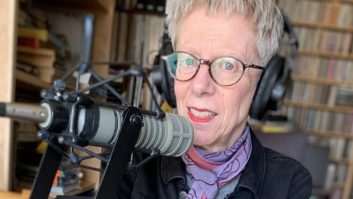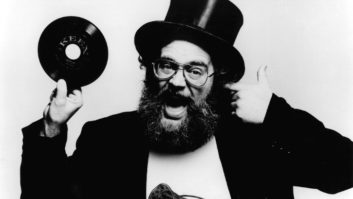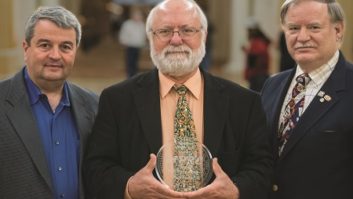American University’s WAMU(FM), Washington is now transmitting both an analog and digital signal. WAMU began main channel digital transmission on Friday night May 7 at 7:50pm. WAMU is beta-testing a second digital channel with special authorization from the FCC. It believes it’s the first station to do so, aside from the original four test stations for the concept.
Its main digital audio stream is at 64 kbps and the supplemental channel is 32 kbps. The supplemental audio channel, which the station is calling “WAMU 2,” includes transmission of a 7-minute demonstration that includes that includes clips of WAMU and NPR programs. The station began transmitting the supplemental stream on Saturday, May 8 at 3:38 p.m.
Program-associated data is also being transmitted using hard-drive systems from D.A.V.I.D. Systems, Inc.
WAMU has a new Harris Z8HDS digital transmitter for the digital signal. WAMU is using high-level combining. The power level out of the ERI IBOC combiner is 17,000 watts analog and 170 Watts
digital, according to DOE John Holt.
Harris provided a Harris Flexstar Importer to WAMU for use with their digital transmitter and Dexstar exciter to broadcast supplemental audio.
WAMU’s digital conversion cost around $110,000. It received CPB funding for most of the cost and had a separate grant for the remainder.
WAMU timed its conversion to coincide with the Public Radio Leadership Conference, being held this week (see below).
Those involved in the project for WAMU were John Holt, director of engineering and operations; Jonathan Charry, assistant director of engineering and operations; Richard Cassidy, director of information technology and new media; Francis Ying, Internet audio/audio engineer; Mark McDonald, program director; Lettie Holman, program manager, and Stephanie Kaye, announcer.
NPR participants were: Mike Starling, vice president of engineering; Jan Andrews, senior engineer and John Kean, senior technologist.
WAMU had help from several employees of Harris Corporation, including Dave Agnew, Fridolin Mueller of D.A.V.I.D. Systems and Ibiquity Digital broadcast engineer Pat Malley.
WAMU Goes Digital
WAMU Goes Digital









